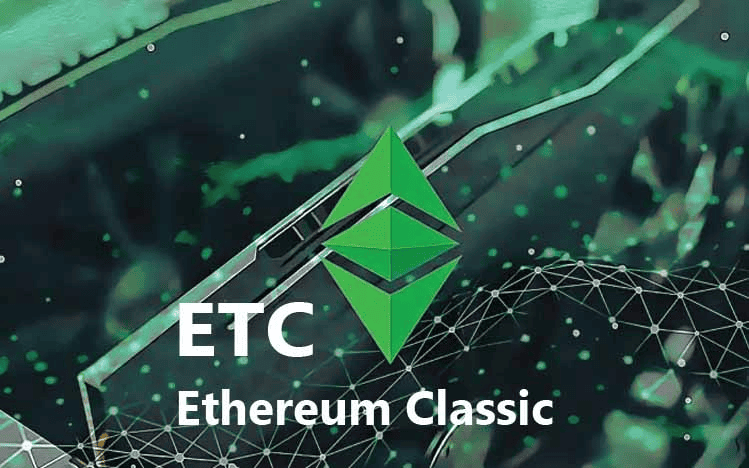Ethereum Classic was developed in 2016 after a hack caused the Ethereum community to argue about whether to pay network users. Vitalik Buterin preserved Ethereum as a hard fork, while Ethereum Classic was kept as the “immutable” chain. Not sure what Ethereum Classic (ETC) is or how to get started? This guide aims to enlighten you about the background of Ethereum Classic.
What Exactly is Ethereum Classic (ETC)?
ETC is a well-known cryptocurrency that has faced and overcome a lot of hurdles. Buterin and his team created ETC as software to aid in creating decentralized apps(dApps) and new cryptocurrency tokens. It was under a brand-new Ethereum blockchain system. Decentralized apps power smart contracts stored on the ETC blockchain power. In June 2016, the Ethereum network broke due to disputes about the protocol’s immutability. A subset of miners who chose an alternate development road map actively supported the Ethereum Classic network. Since its creation, Ethereum Classic has defied splits and modifications made by its creators. Many investors buy ETC when they believe the value of Ethereum will grow. This is because ETH is more expensive, and ETC is less expensive. The easiest and quickest method to buy ETC is via other customers of a cryptocurrency exchange.
What is the Objective of Ethereum Classic (ETC)?
Ethereum Classic employs a Proof of Work consensus technique to verify transactions. Miners are accountable for the network’s security. They are in charge of processing power, executing transactions, and creating blocks. Network transactions must occur in the order in which they are initiated. One of ETC’s key characteristics is network members’ ability to execute smart contracts. Smart contracts are self-executing bits of code that comprise agreements. Since everything takes place within the system, no mediator, such as an attorney, is required to manage the transactions. Despite the split, the blockchain will still be protected by Proof of Work mining, which will reject modifications from the other Ethereum network.
Who are the Ethereum Classic Founders?
According to the Ethereum Foundation, the Ethereum Classic Mainnet became live through Frontier on 30th July 2015. The team’s main goal was to implement the concept of running smart contracts through a blockchain network. In June 2016, members of the DAO, a well-known decentralized program, had $50 million stolen from them. The attacker emptied more than a third of the DAO’s core reserves by exploiting a technical flaw. This enabled them to recall more DAO tokens than the user donated. There was debate about whether the chain should split and how the developers should react as a consequence. On 15th July 2016, an on-chain vote on the DAO hard fork proposal was conducted with little forewarning. There are now 82,054,716 ETH in circulation, of which 5,054,716 were used to vote. 577,88 ETH (13%) voted against the DAO Fork, whereas 3964,516 ETH (87%) supported it, with one address accounting for a quarter of the total. Even though the vote was set up too quickly, the Ethereum network and Ethereum Classic legally split on Block 1,920,001. The “difficulty bomb” was developed to switch the Ethereum network from Proof of Work (PoW) to Proof of Stake. An update known as Ice Age was implemented on the network to execute the upgrade at block 200,000. Once the hard split was complete, Ethereum Classic modified its infrastructure on block 5,900,000 to disable the difficulty bomb permanently. This kept the PoW consensus method working.
What Characteristics Set ETC Apart?
Ethereum Classic and Ethereum share many features since they use the same underlying code. ETC differs from Ethereum because it keeps its immutability and gives users a Proof of Work process that doesn’t change. ETC has also chosen an excellent financial approach. ETC may be produced up to 230 million times.
How Many ETC Coins are Currently Available?
There is a maximum of 230,000,000 ETC tokens available, of which 136,773,076 are in circulation. Miners that support, protect, and manage the network may earn ETC tokens. Since ETC is the first version of Ethereum’s blockchain, the ICO distribution on both networks was identical. The Ethereum Classic chain split off during a hard fork; hence there was no token distribution.
Is Ethereum Classic a Safe Investment?
Ethereum Classic employs a consensus approach known as Proof of Work (PoW). For network security reasons, ETC will never use a different consensus method. ETC miners keep the network safe by doing hard computer tasks to build and check blocks of transactions. To proceed to the next block, the network requires consensus from every node or miner on the sequence of the blocks. This consensus method keeps attacks from happening by making it so that hostile players have to control at least 51% of the network. Proof-of-work is paid on the Ethereum Classic network to encourage further chain growth.
What Determines the Value of Ethereum Classic (ETC)?
The Ethereum Classic coin manages and maintains the Ethereum Classic network. There are several ways for users on the ETC network to make money. ETC users may use smart contracts, make network transactions, and interact with dApps. Ethereum Classic is a contentious cryptocurrency with a long history. It is still in use, with a daily trading volume of more than $1 billion. Δ Contact Us :- trendblog.guest@gmail.com
